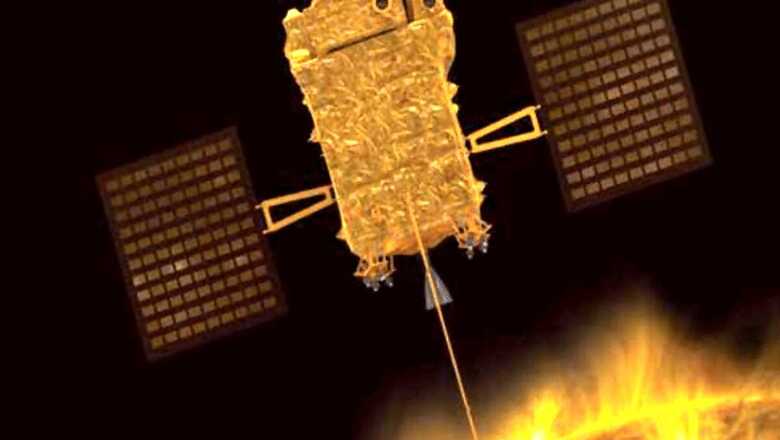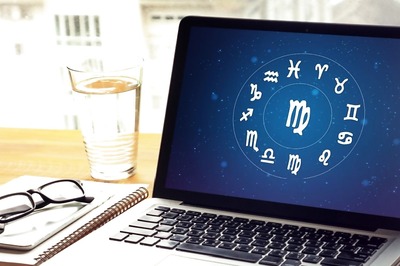
views
After the successful Chandrayaan-3 mission to the Moon, the Indian Space Research Organisation (ISRO) is all set to launch its first-ever solar space mission known as ‘Aditya-L1’ to study the sun.
Aditya-L1 will be launched on September 2 at 11.50 am from Sriharikota spaceport in Andhra Pradesh. This is the country’s first space-based mission to study the hot star.
The Aditya-L1 mission aims to study the sun from an orbit around the L1.
What is the Aditya-L1 mission?
Aditya-L1 is India’s first sun mission to provide very vital scientific studies of solar dynamics in the interplanetary medium.
The spacecraft is designed in a way that it will provide remote observations of the solar corona and undisturbed observations of the solar winds.
Aditya L1 Launch Date & Time
Aditya L-1 mission, the first space-based Indian observatory to study the sun will be launched from Sriharikota on September 2 at 11: 50 am.
The spacecraft will be launched using a PSLV-C57 rocket from the southern state.
What are the main objectives of the Aditya L1 mission?
The data provided by the spacecraft will be used for solving how the temperature of the corona can reach about a million degrees while the Sun’s surface itself stays just over 6000 degrees Centigrade.
The spacecraft would provide observations on the corona and on the solar chromosphere. This will be done by using the UV payload.
PSLV-C57/️Aditya-L1 Mission:The launch of Aditya-L1,the first space-based Indian observatory to study the Sun ☀️, is scheduled for️September 2, 2023, at11:50 Hrs. IST from Sriharikota.
Citizens are invited to witness the launch from the Launch View Gallery at… pic.twitter.com/bjhM5mZNrx
— ISRO (@isro) August 28, 2023
Aditya L1 Launch Vehicle & Spacecraft Information
Aditya-L1 is developed by U R Rao Satellite Centre in Bengaluru and it arrived at ISRO’s spaceport of Sriharikota in Andhra Pradesh earlier this month.
Will Aditya L1 land on Sun?
Aditya-L1 will be placed in a halo orbit around the L1 point of the Sun-Earth system.
What are the Advantages of Aditya-L1?
The placement of Aditya-L1 in this halo orbit acts a major advantage as it can consistently view the Suns without any planets obstructing, according to ISRO.
“This will provide a greater advantage of observing the solar activities and its effect on space weather in real time,” ISRO added.
So, 4 payloads would directly view the sun, and the remaining 3 would carry undisturbed studies of particles and fields at the L1 point.
What is Aditya L1 Mission Objectives?
The Aditya L1 mission has four main objectives:
- To study the physics of the solar corona and its heating mechanism.
- To understand the dynamics of the solar wind acceleration.
- To investigate the origin and dynamics of coronal mass ejections (CMEs).
- To study the propagation of particles and fields in the interplanetary medium.
What is the future of the Aditya L1 mission?
The spacecraft will carry 7 payloads (boards of satellite) to observe layers of the sun. It will observe the three outermost layers including photosphere, chromosphere and the corona in different wavebands.
Aditya-L1 is a fully indigenous effort with the participation of national institutions, an ISRO official said.
Aditya L1 Budget: What Is the Total Cost of the First Space Based Solar Mission of India?
Aditya L1 mission is done at an estimated to cost Rs 424 crore, which is US$570 million.
How big is Aditya-L1?
The spacecraft is about the size of a refrigerator and weighs about 1,500 kilograms. The spacecraft will be powered by solar panels and a radioisotope thermoelectric generator.
How long will Aditya-L1 operate for?
The spacecraft is expected to operate for five years.
What does L1 mean in the spacecraft’s name?
The L1, in the name of the mission, means the Sun-Earth Lagrange point which is about 1.5 million kilometers from the Earth.
Lagrange Points are essentially positions in space where the gravitational forces of the Sun and the Earth produce enhanced regions of attraction and repulsion, according to NASA.
These forces are used in the to reduce fuel consumption needed to remain in position.
What is Chandrayaan-3 mission?
Chandrayaan-3 is a follow-up mission to Chandrayaan-2 that will attempt safe and soft landing on the lunar surface. This mission aims to showcase India’s technical capabilities in achieving a precise landing on the Moon.
The lunar craft will deploy a rover on the lunar surface to demonstrate its ability to rove and explore the Moon. The rover will collect data on the composition and geology of the moon, which will help scientists learn more about the history and evolution of the satellite.
Chandrayaan-3 will also be the first mission to land on the lunar South Pole. This region is of special interest due to its permanently shadowed areas, where the presence of water ice is anticipated.
With PTI inputs




















Comments
0 comment